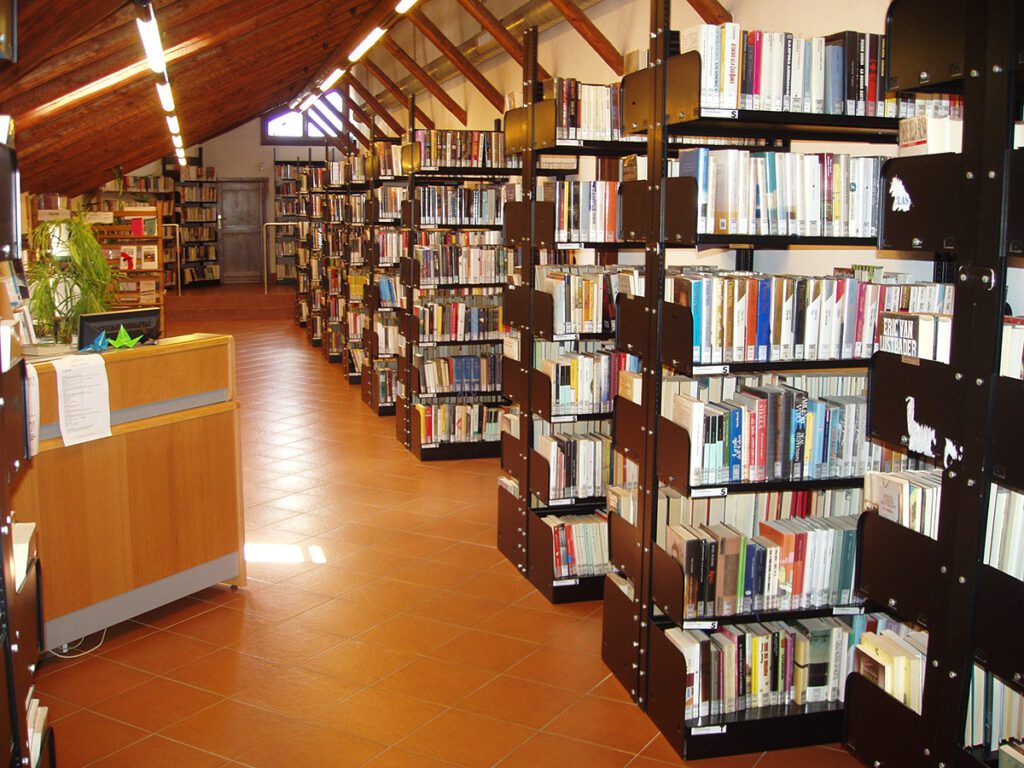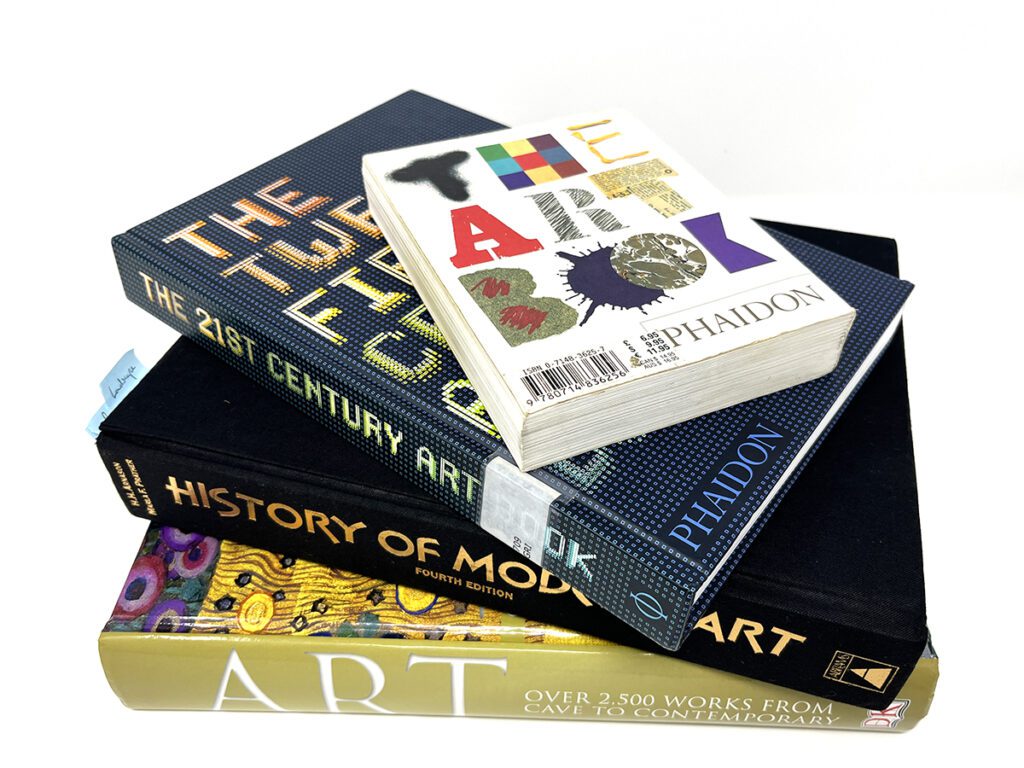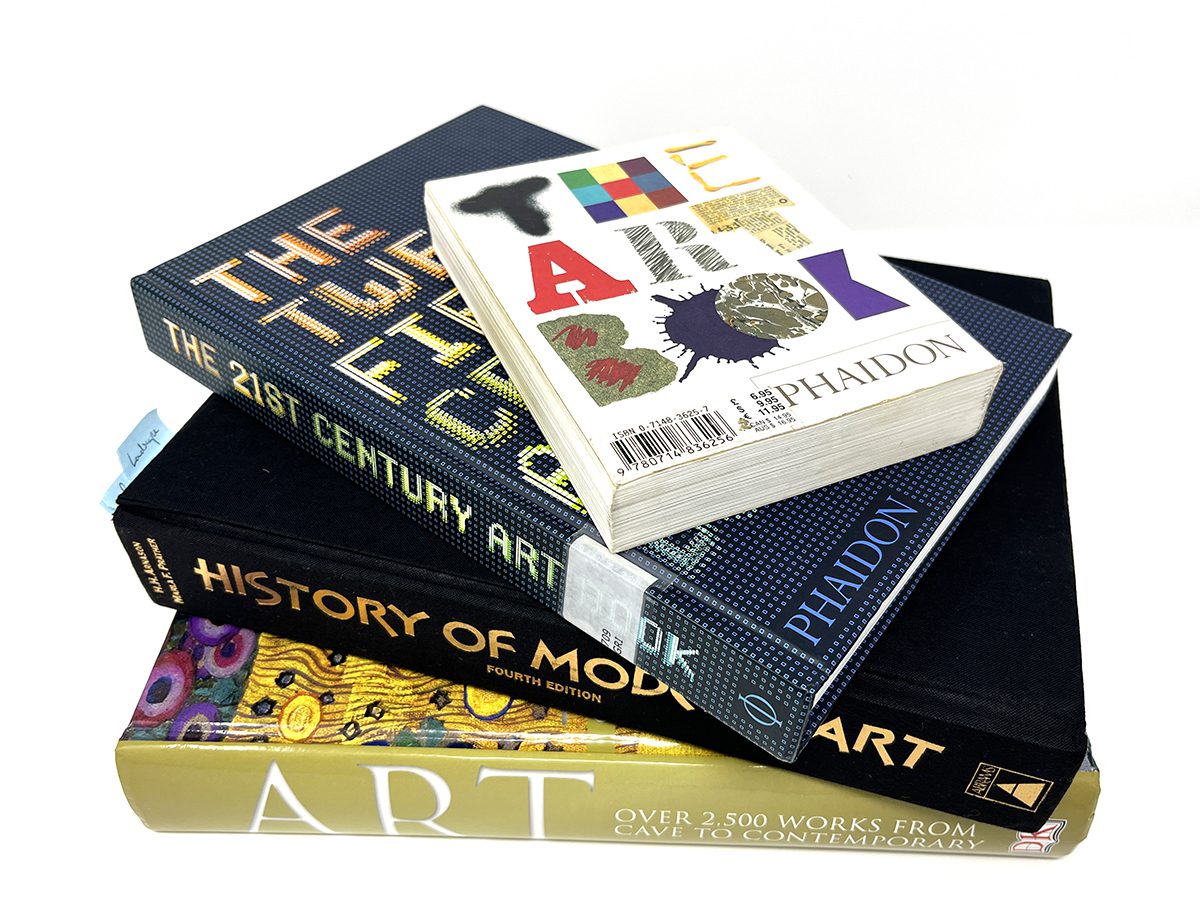How long has it been since you visited your local library? Maybe you were there today or maybe you worry they have a photo of you on the wall for outstanding fees. If it’s been a while since you’ve stepped foot into a library, you may be pleasantly surprised to learn that many of them are no longer just for books but also marketplaces of ideas! Many libraries have taken innovative strides to stay up-to-date with technology and community needs. Don’t let libraries be an underrated tool; check out your library and its offerings, and chat with the library team to learn how to collaborate this year.
Here are various ways art teachers can utilize the gem in their community—the library!

1. Read books.
Of course, the most obvious way to use the library is to check out books! The benefits of reading are immeasurable but include increased cognitive and metacognition functions. The more we learn as teachers, the more we can teach our students. Plus, the more we read, the better writers, speakers, and communicators we become. In the 21st century, if physical books are no longer your thing, most libraries have the option to download an app to get your books digitally. Libby is a fantastic app that many libraries use.
Students love picture books! They make great supplemental resources for lessons and an educational early finisher activity. If you’re finding it hard to build up an art room bookshelf, borrow some books from the library. Work with the children’s desk team and follow your district and school policies to curate a list of books to support your curriculum.

2. Sign up for a class.
Libraries offer many classes on a wide variety of subjects for any age. Some of these are one-day classes, while others span over a few weeks. Library employees or outside experts teach the classes and costs vary from free to very affordable. Consider signing up for a workshop to learn more and bring a new craft to your students this year.
You can also apply to teach your own class or workshop at the library! Whether or not you get paid, you will gain valuable connections and stretch your teaching skills.
3. Join a meeting or meetup.
Most libraries have a conference room or quiet space. Switch things up and reserve the space for your next department meeting. Changing up your surroundings can improve workflow and motivation. This is also a good option if there is a conflict of interest and you cannot host a meeting on school grounds. Consider hosting a meetup for your students and their families! Facilitate an art book talk, artist discussion, or a family artmaking activity. If you decide to explore this avenue, ensure you are following all district and school policies.
4. Exhibit your school art show.
While libraries have extra rooms for meetings and studying they may also have spaces great for art shows! Many libraries have bulletin boards and windows to display two-dimensional work. The top countertops of shorter bookshelves can display small three-dimensional pieces at eye level. Extra book carts can be covered with colored paper and display even more art!
Look for areas of open space to roll in purchased or DIY mobile partitions to hang art. Exhibiting student work at the library will naturally invite more community members to look at the art produced by your program. This is also very exciting for students! It makes it a special occasion to have their work on public display. Speak with your library branch manager about hosting a gallery opening event to kick off the show!
In the same vein, many libraries also host their own art shows for artists and students to enter. This may include cash prizes, special awards, and ceremonies. Most times the entry fees are cheap or waived. This is a wonderful opportunity for students to get into the show market or for you as a professional artist to get back in the game!
5. Decrease the summer learning gap.
Libraries offer a ton of summer programming but many families are unaware. Some researchers believe getting the word out about summer activities before the end of the school year can help parents get their kids more involved. Add a link to library offerings in your art newsletter this spring or include a printout in your summer activities packet. Encouraging your students to keep active and engaged during June, July, and August can help decrease summer learning loss. Play is immensely important for students but so are positive and mentally stimulating activities.
6. Explore specialty labs and equipment.
Some libraries offer specialized equipment you may not otherwise have access to at your home or school. Find laser engravers, vinyl cutters, 3D printers, and more at your local library. This can be an excellent opportunity to do a collaborative event or ask about using this equipment for special class projects. Along the same lines, some branches may have special lab spaces like a STEAM, science, or nature lab. In some instances, they offer take-home activities or lendable lab kits for more fun!

7. Contribute art or create a mural.
Art, murals, and libraries are a perfect representation of the power of visual literacy. A library may need an existing mural freshened up or a new one painted to commemorate a special event. No matter the reason, this can be a great opportunity for you and your student artists to get messy and make art that will positively impact the community.
8. Reach out to the community.
Just like schools, libraries serve their communities. They can provide items, services, and resources to benefit local families. Consider how you can give back to your community through your library. Teach a class on your favorite art medium, or host a group or support session for first-year art teachers.
Libraries are places to explore, create, grow, and learn. These institutions share the common goals of creating a better world for our youth and empowering others with opportunities. Libraries are hidden gems that can provide so many wonderful things and are also great places to give back! So, on your way home today, make a pit stop at your library. Walk around and look for spaces to exhibit student art, peruse their list of workshops, and tour their meeting spaces. Chat with the team at the front desk and find a way to collaborate with them soon!
How do you use your library to inform your teaching and personal artmaking?
Share one way your art program has collaborated with the local library.
Magazine articles and podcasts are opinions of professional education contributors and do not necessarily represent the position of the Art of Education University (AOEU) or its academic offerings. Contributors use terms in the way they are most often talked about in the scope of their educational experiences.





